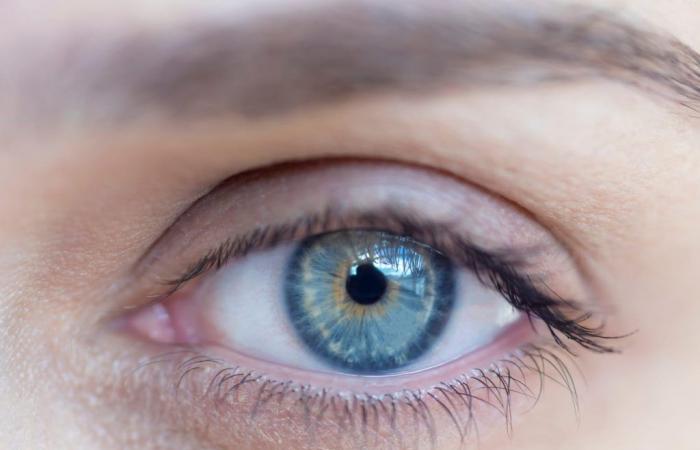This rare hereditary disease particularly affects young men.
Leber hereditary optic neuropathy (or Leber optic atrophy) is a rare hereditary disease characterized by sudden decline in vision. It affects one in 30,000 to 50,000 people, particularly young men (it generally occurs between the ages of 15 and 35, although it can also occur much earlier, sometimes before the age of 10). It causes poor functioning of the optic nerve, the same nerve that transmits information from the eye to the brain. “It begins with a very profound loss of visual acuity, this being less than 1/20 in a few days”explains Dr Christophe Orssaud, Head of the Functional Ophthalmology Unit at the Georges Pompidou European Hospital, in Paris. “Then a few weeks later she touches the second eye with an identical reduction in visual acuity. This profound alteration of vision is linked to the presence of a stain or central scotoma in the visual field of each eye. This is why, while it is possible to speak of profound visual impairment or near-blindness, the patient retains peripheral vision and can move around alone and without a cane in the vast majority of cases.” And Dr Damien Gatinel, ophthalmic surgeon at the Rothschild Foundation Hospital in Paris, added: “In rare cases, other symptoms may appear in addition to visual impairment: deafness, balance problems, skeletal damage, heart rhythm disturbances…”
What are the causes ?
This disease is a condition ofgenetic origin. “It is caused by mutations in mitochondrial DNA which affect the production of different proteins of complex I of the intramitochondrial respiratory chain (ND1 and ND4)”, indicates Dr Orssaud. However, not everyone with this genetic mutation develops Leber’s hereditary optic neuropathy. Certain factors, such asalcoholtobacco, a trauma or anesthesia could contribute to triggering the disease.
The clinical signs of the disease make it possible to suspect the diagnosis. “But numerous examinations will be necessary to confirm this, and above all to eliminate curable causes of optic nerve damage” says Dr. Gatinel. It is such a fundus examination, an OCT, the study of the visual field, the measurement of visual evoked potentials which makes it possible to measure the electrical activity of the optic nerve, an electroretinogram which makes it possible to know the electrical activity of the retina as well as a brain MRI. There genetic research is essential to highlight the genetic mutation.
What are the therapeutic solutions?
“A treatment, idebenone (Raxone®, Chiesi) has a marketing authorization (marketing authorization, editor’s note) in this pathology. But this treatment does not give results in all patients and remains limited in terms of recovery”, explains Dr. Orssaud. Optical aids such as magnifying glasses can be proposed to improve the daily comfort of patients. However, researchers from Inserm at Sorbonne University and CNRS at the Vision Institute in Paris have designed a genetical therapy for patients with the 11778 mutation. This gene therapy is supposed to correct the synthesis defect of the ND4 gene by adding DNA sequences, called “addressing sequences”, to the gene. The results of a clinical trial carried out on 37 patients and published in the journal Science Translational Medicine, show that this treatment significantly improves bilateral vision in more than ¾ of patients (1). “Nevertheless, the final acuity after this treatment remains close to 1/20”specifies Dr. Orssaud.
Thanks to Dr Christophe Orssaud, Head of the Functional Ophthalmology Unit at the Georges Pompidou European Hospital and to Dr Damien Gatinel, ophthalmic surgeon at the Rothschild Foundation Hospital.
- (1)Patrick Yu-Wai-Man et al. “Bilateral visual enhancement with unilateral gene therapy injection for Leber hereditary optic neuropathy” – Science Translational Medicine – December 2020






